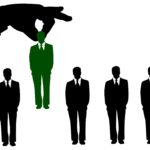Getting old gracefully: how to prepare for the ageing workforce

 BUSINESSES are in a race against time as more workers enter retirement and leave companies parched of skills, experience and resources.
BUSINESSES are in a race against time as more workers enter retirement and leave companies parched of skills, experience and resources.
Managing Director of Adrian Walsh & Associates Adrian Walsh has provided human resources, consulting and business development services to the mid-size market for more than 20 years.
He says employers underestimate the threat the ageing population will have on their business.
“I don’t think we’ve woken up to the magnitude of the problem. The ageing workforce is a simple fact. Organisations with larger staffing numbers want to have continuity, and will have to grapple with it.”
Walsh & Associates first began to explore the impact of the ageing workforce developing an index in collaboration with the Swinburne University of Technology.
“We started to look at the statistics, and where the workforce was going in terms of age structure. We looked at useful things you could do around identifying what your workforce might look like over the next 5, 10, 20 years.”
The firm has helped businesses like CSL and St George’s Hospital in Melbourne come to grips with the changing demographics of their workforce.
“The data is very clear. Through the 1980’s and 1990’s the Australia workforce increased each year by 100,000 to 200,000 people.”
“Through the 2020’s, only 100,000 people for the entire decade are going to be added to the workforce. That’s a staggering number when you look at the historical situation.”
Running in step with that trend is a growing pool of retirees.
“You talk to most people in the workforce today and the desire is early retirement. The standard age of retirement was 60 and 65. But people don’t want to do that anymore. By and large they want to retire at 55 or earlier. How do we convince them that’s not necessarily a good choice for us as a community, or for them individually?”
Adrian Walsh spoke to First 5000 Editor Virginia Harrison




